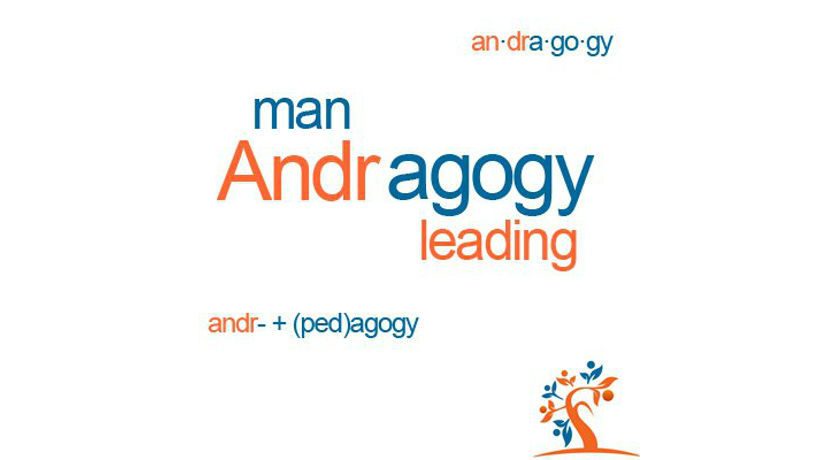How To Engage And Inspire Adult Learners
Designing eLearning deliverables that motivate and engage adult learners can be challenging. However, creating top notch eLearning deliverables that cater to adult learners comes with its own unique set of challenges. The good news is that there are a number of tips and techniques that can help you to create meaningful educational experiences for adult learners, which can be applied to eLearning courses and online training events.
Top Tips To Create Memorable Training Experiences For Adult Learners
1. Make It Relevant
Adult learners need to be able to see the relevancy of what they are learning. How is this eLearning course going to offer them the skill sets they need to improve their work performance? How is the online training event you're developing going to give them the information they need to master a particular task? When designing eLearning deliverables for adult learners, you have to keep in mind that the content has to be relevant, or else they will not be able see the real value in the educational experience you're providing. While you are writing each block of text or choosing the perfect graphics and images, think about how these are going to serve the primary learning goals and objectives.
2. Facilitate Exploration
Adult learners accumulate knowledge most effectively when they are active participants in their own learning process. Design activities or assignments that encourage them to explore a subject matter on their own and learn from personal experience. Pose a question or problem and then ask them to arrive at a solution on their own, or place them in groups and have them collaborate in order to discuss the issue at length and benefit from one another's experience and skill sets. When they acquire knowledge on their own, they get inspired to pursue other avenues of self study and online education, and to become more fully engaged in the eLearning environment.
3. Consider The Experience And Educational Background Of Adult Learners
Adult learners have typically gathered more life experience and accumulated a broader knowledge base than younger students. As such, when you're designing your eLearning deliverables for adult audiences, you'll want to take their experience and educational background into account. In other words, it is of high importance to assess your audience carefully. What is the highest level of education they've completed? Which particular tasks are they usually asked to perform while at work? Do they already know the technical jargon that is commonly used in their profession?
4. Offer Immediate Feedback
Make the educational experience more powerful and effective by offering immediate feedback when they make an error, or even when they need to know about an alternative problem solving approach. This will provide them with the opportunity to learn from mistakes by catching them at the moment they occur and seeing the direct consequences of that error, rather than waiting until the moment of need has passed to offer invaluable feedback.
5. Integrate Emotionally-Driven Content
Adult learning audiences often benefit from content that is emotionally-driven. If they feel emotionally connected to the subject matter, then they are more likely to be engaged, so that they will actually absorb and retain the information. Use images and graphics that are powerful and relevant, as well as written content that evokes a certain feeling. Even the font you use can convey a certain emotion. Positive emotional elements can also serve to inspire and motivate learners who may feel disconnected from the eLearning environment.
6. Emphasize The Real-World Benefits
Can you concisely sum up the real-world benefits that your eLearning course or online training event offers to its adult learners? Adult learners need to be informed of the real-world benefits beforehand and should be reminded of these benefits periodically. For example, you can add a side note to every module, explaining how the content will offer them real world benefits. This will allow them to realize the purpose behind the educational experience so that they become motivated and excited.
7. Consider Cognitive Overload
Break your content up into smaller chunks to help avoid cognitive overload. Avoid using large blocks of text, and opt for bullet points or numbered lists instead. You may want to consider designing smaller modules or eLearning courses that focus on specific subject matters, rather than lengthy eLearning courses that cover a wide range of topics. Chunking is also essential, as it helps people remember and assimilate information. Small bits are easier to process.
8. Use Avatars And Storytelling
Avatars can guide adult learners through modules to increase knowledge comprehension and retention, while storytelling makes the subject matter more interesting and relatable for them. Keep in mind, that when using characters or stories, you should add at least a touch of realism in order to make the content more immersive and effective. It's also essential to stimulate your learners. Encourage them to think by either providing them with brain teasers or by asking thought-provoking questions.
9. Create Deliverables That Can Be Completed Quickly And Conveniently
Adult learners often learn while they are on the go, meaning that they should be able to access the eLearning deliverables on their mobile devices. By creating eLearning deliverables that can be completed quickly and conveniently, you offer them the opportunity to absorb and retain the information anytime, anywhere and when they need it the most.
10. Remember That Practice Makes Perfect
Include plenty of practice exercises in your eLearning course to ensure that adult learners are able to fully absorb and remember the subject matter. Repetition is key, so develop tasks that require them to repeat certain steps over and over again and keep on reminding them of the important key points all throughout the eLearning course.
11. Use Aesthetically Pleasing Design Elements
Aesthetically pleasing eLearning courses and modules can be more easily assimilated by adult learners, not to mention that can create a more interactive and visually stimulating experience. Include compelling and inspiring images, colorful fonts, and graphic elements that help to draw their attention to the core aspects of the modules.
12. Build Community And Integrate Social Media
Keep in mind that social media websites are a powerful tool for collaboration, commenting and sharing. You can facilitate group discussions and communities. People will quickly start exchanging knowledge, and will also have fun, social media is fun!
13. Challenge Through Games
Come up with different problem-solving exercises and case studies. Make your learners look for and find solutions.
14. Use Humor
Humor would work great even with the most demotivated learners on your course. When your students know you are funny, they will listen to your material carefully, cause they wouldn't want to miss on your witty sense of humor. You can never lose with that.
15. Add Suspense
Don't give out everything your course is about in the beginning. Yes, you need an overview, but keep some interesting points until the time is right. No one likes to read a book if they know what's about to happen.
16. Allow Time For Information Processing
When you are dealing with busy adult learners, it is quite tempting to cram as much information as possible into a short period of time. However, this is counter-intuitive and may ruin the eLearning experience for everyone involved. As a general rule, for every ten minutes of online instructions, you should allow busy adult learners two minutes to assimilate the information before presenting the next eLearning module or activity.
17. Consider LMS Platform Accessibility
Most busy adult learners simply don't have enough time to tackle their current work and family commitments. Therefore, they must have the ability to gain access to the LMS platform whenever they have the time to do so. Since the accessibility of your LMS platform is important, it is best to evaluate your options before you make a commitment. When you choose an LMS platform, ensure that it has all the essential features you need in order to optimize the eLearning experience. This could include file uploads, instant messaging, online calendar, rating systems, quizzes, social media widgets and more. Naturally, you must also look for the extra functions you need to make your eLearning course successful.
18. Offer Rewards
I'm not referring to gift cards or monetary incentives. Instead, it's best to provide busy adult learners with intrinsic rewards to spark their motivation. For example, eLearning badges or points that allow them to display their accomplishments and work toward the "ultimate" goal, which may be something as simple as paid time-off or a printable certificate they can show off to their peers. This is yet another reason why audience research is so crucial. It gives you the background information you need to choose the best rewards for the job. For instance, leaderboards may be the ideal approach for adult learners who are more competitive.
Conclusion
Adult learning experiences must be rooted in real-world application, personal reflection, and intrinsic rewards. Adult learners are in search for practical knowledge and skills that help them in their everyday lives. That is the common motivator that you need to bear in mind. When all is said and done, the ability to move from theory to practice is what determines a successful eLearning course.
If you'd like to learn more about the traits of adult learners, the article Important Characteristics Of Adult Learners offers an informative look at 8 important characteristics that you'll want to keep in mind while designing eLearning courses for adult audiences.
I also highly encourage you to read the article 9 Tips To Apply Adult Learning Theory to eLearning which discusses how Knowles' 5 adult learning theory assumptions can be translated to modern day eLearning experiences, and how you can integrate the 4 principles of Andragogy into your eLearning course for maximum learner engagement and motivation.
Recommended Resources On How To Motivate Adult Learners
- Get Your Audience Pumped: 30 Ways to Motivate Adult Learners
- Fostering Motivation in Professional Development Programs (PDF)
- Understanding the Adult Learners Motivation and Barriers to Learning (PDF)
I really like this video by Ashley Odom. By watching it you will be able to answer the following questions:
- What is Motivation?
- What is an Adult Learner?
- What is the Importance of Motivation in Adult Learning?
- How to Motivate Adult Learners
Last but not least, motivating your learners might be easier to achieve if you add gamification features to the mix. Progress bars, badges, and leaderboards are just a few of the ways you can engage your learners and provide discreet feedback. Find the right gamification LMS using our top list. We’ve found the best gamification LMS solutions out there to help you decide what fits you best and simplify your search. Check user reviews, features, and prices, and compare software, to choose the one that’ll transform your learners’ experience. So, if you’re ready to take your learning to the next level, start evaluating vendors today.







